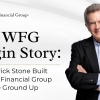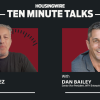
Some agents subscribe to the “3 Ps” of marketing, which allegedly are:
- Put a sign in the yard.
- Put it in the multiple listing service (MLS).
- Pray.
There is nothing wrong with praying or burying the St. Joseph statue in your front yard, but to be highly successful, you need methods other than this typical three-step approach.
The model I have adopted is called the “7 Ps” of marketing. The components of this system are price, product, promotion, place/position, people, process and physical evidence (or what I call “social proof”). I use this model throughout my business and in my listing marketing.
Let me show you how I incorporate each one of these into my real estate listing business:
1. Price
It can be argued that price is a function of marketing. If you don’t price an item correctly, then it does not matter how much marketing effort you put forth. Agents should strive to be pricing and market experts to guide sellers down the right path. The proper price will position the property correctly in the market.
When I price a property, I do a lot of research, use similar methods as a licensed appraiser and determine the correct price to sell in 30, 60 or 90 days. I also use probability models so I can maximize profit for my clients in the shortest amount of time. My pricing model is infused with psychology. I do not position my client’s property in the marketplace like every other agent. I believe in price “break points” and examine how buyers shop for homes.
For instance, if a property’s true market value is $200,000, I will strategically price it at $200,000. You may think, what is so special about that? Well, 99 percent of the agent population would probably price that property at $199,999. Is this not true? The reason that the latter is not a good strategy is that according to most sources, 90 percent of buyers start their search on the Internet. Buyers search by price points, or “break points.” If you price a home at $199,999, you may miss the buyers starting their price range at $200,000. When you price at $200,000, you capture both high and low sides of the search. So, a buyer looking between $175,000 and $200,000 will find the property, and the buyer looking between $200,000 and $225,000 will also not miss the property.
2. Product
Product is the essence of what you are selling, your inventory, the properties you market. The product is also an extension of your brand. Agents should work hard to control their inventory, inventory costs and how product can influence their overall business.
For example, accepting the wrong listings into your business at the wrong price can be detrimental for your clients and the overall longevity of your brand and company. One way to determine the correct or marketable inventory is to do your research and become an expert. Knowing the turnover rates in each community, inventory levels, absorption rates and true days on market are all components of expertise. If you can control your product, you will control the market.
3. Promotion
The promotion relates to how you will market, advertize and expose your product or property. Being one-dimensional is a downfall of many agents. In my opinion, an agent should look at every listing as a future return on investment.
For instance, if you take the right product at the right price, and you promote it well, then you should attract buyers. Sellers will see you as the expert when you sell homes fast and at market value. Each “saleable” listing should be viewed as a future benefit for your business.
How can you achieve this? Remember, price is a function of marketing. Promotion is all about the actual marketing. Without the right blend of effective marketing, you may never achieve your clients’ goals. It all starts with the photos, the description or script and calls to action. I would suggest that you syndicate or market your product online, participate in video, share your listing through the proper social channels and utilize your database of buyers and the MLS.
Go overboard in your marketing efforts if the price is at market value. It always amazes me when I hear agents say, “Wow, the property sold so fast, I do not have to market it!” This is the wrong thinking. I market my properties up to the day they close.
4. Place or positioning
This fourth “P” refers to how you position your product in the marketplace with the right price and promotion. The question should be, “Who are you trying to attract?” What message do you want to convey? What is the story of the house? Every home has a story; the pictures and description are imperative to paint the right picture and attract the right buyer.
Look what other agents are doing regarding their MLS descriptions and do the opposite. Stop using all capital letters and short codes that make no sense to the search engines and the buyers. There is a marketing science to positioning your product correctly.
5. People
This refers to your team, assistants, agents or support staff members who help you run your business and fuel the engine to your listing inventory or product. Hiring the right people is essential. Training your assistants on automating your listing systems is imperative. As an agent, you are only as good as the people surrounding you. Surrounding yourself with people who share the same vision and passion is what you should strive for.
6. Process
The process is the system or management of your product. This stage involves communicating your marketing efforts with your seller client, providing clients with showing feedback, sharing data for the number of property views from major listing portals and examining overall market data each month. The goal is to provide your client with full transparency and an insight into how your marketing system will help them. It is everything you do from the time you list their property in the MLS until the property is fully sold and title docs are transferred at the closing table.
7. Physical evidence (or “social proof”)
The way you market the product is a direct representation of yourself. Your goal is to satisfy your clients. You cannot make everyone happy; however, if you choose the right product at the right price, promote and position the product correctly, then you will have fewer problems and happier clients. Homes will sell faster with fewer hassles. Testimonials are also crucial at this stage. Testimonials will help build your brand and is another way to position you as the expert or authority to give social proof.
This is a business model to help you help more listing clients at a higher level. It will also help you stay on course, remaining true to your message, brand and reputation. Regardless of how many “Ps” or principles you have in your marketing mix, the key is to adopt a system, stay consistent and reap the rewards.
Robert McTague is the team leader of CNY Agent Team of Coldwell Banker Prime Properties in Syracuse, New York, where he simplifies the process of buying and selling and offers assistance with marketing, coaching, and speaking.
The post ‘7 Ps’ of real estate listing marketing appeared first on WFG National Title Insurance Company.






